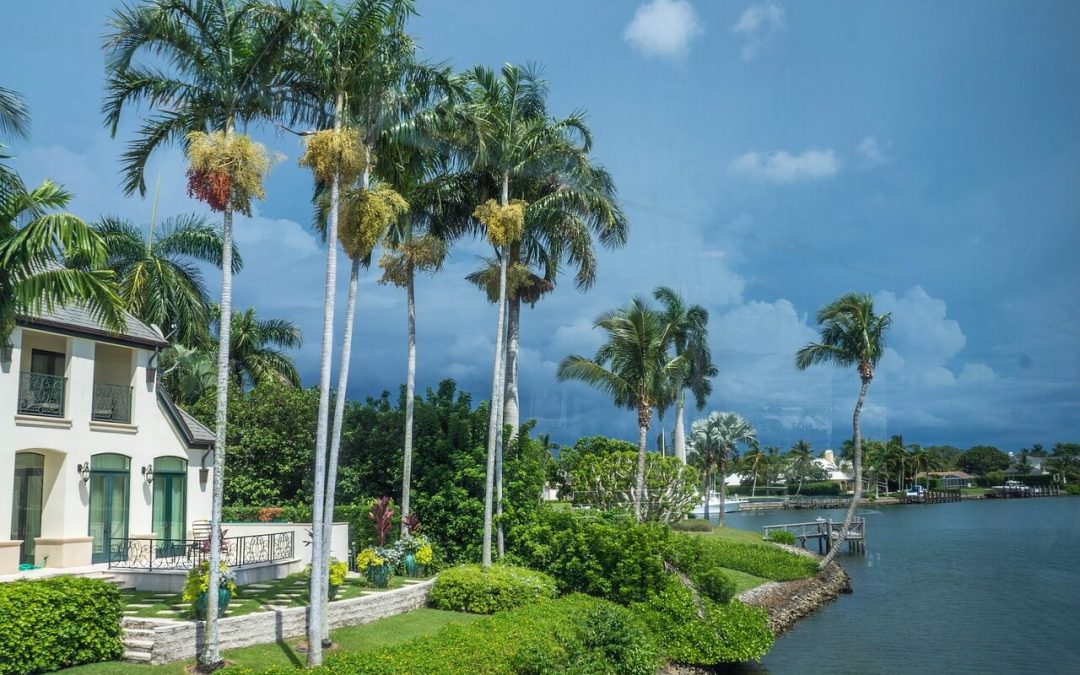Living near the ocean in a wind-prone area offers breathtaking views, stunning sunrises, and opportunities to enjoy the coast, but it also comes with its unique landscaping challenges. Create beautiful and functional wind-resistant landscaping to withstand the coastal elements.
Choosing the right plants and implementing smart landscape design turns your outdoor space into a breezy retreat. Let’s explore resilient plants that thrive in windy seaside locations and tips for creating a stunning landscape that stands against the forces of nature.
Embrace Salt-Tolerant Plants
Seaside properties often face the salty sea breeze, which can damage plants not adapted to such conditions. Opt for salt-tolerant plant species like beach roses (Rosa rugosa), seagrass (Ammophila breviligulata), and seaside goldenrod (Solidago sempervirens). These hardy plants can withstand salt-laden air and soil while adding beauty to your landscape.
Landscaping with Wind-Resistant Trees and Shrubs
In coastal areas, selecting wind-resistant trees and shrubs is essential to ensure the longevity of your landscape. Plant trees like live oaks (Quercus virginiana) or red cedars (Juniperus virginiana) that are naturally adapted to withstand strong winds. Windbreaks created by evergreen shrubs, such as holly (Ilex spp.) and juniper (Juniperus spp.), help protect your garden from harsh gusts.
Incorporate Native Plantings
Native plants are well-suited to the local climate, making them a perfect choice for seaside and windy properties. They have adapted to the environment over time and require less maintenance, making them an eco-friendly and resilient addition to your landscape. Native grasses like switchgrass (Panicum virgatum) and little bluestem (Schizachyrium scoparium) add texture and movement to your garden, enhancing its appeal. Talk to an expert at your local garden center to learn about native plants that thrive in your climate.
Create Windbreaks and Hedges for Wind-Resistant Landscaping
Strategically placed windbreaks and hedges shield outdoor living areas from strong winds, providing a more comfortable and enjoyable environment. Opt for dense, wind-resistant shrubs like boxwood (Buxus spp.) or yew (Taxus spp.) to form a protective barrier. These shrubs serve a practical purpose and add structure and visual interest to your landscape.
Implement Hardscape Elements
In windy areas, hardscape elements like stone walls, pergolas, and arbors help break the force of the wind and create a more sheltered yard. Additionally, these features add an elegant touch to your landscape design, complementing the natural beauty of your seaside surroundings.
Wind-Resistant Landscaping Requires Proper Irrigation and Drainage
Proper irrigation and drainage are important for the health of your landscape, especially in coastal regions where water management is essential. Install a drip irrigation system to deliver water directly to plant roots, reducing waste and ensuring your plants receive the necessary moisture. Adequate drainage is equally important, preventing waterlogging and root rot during heavy rainfall.
By implementing these tips and selecting appropriate plants for a seaside, wind-prone property, you create a stunning and resilient landscape that thrives in harsh coastal conditions. Take the time to plan your landscape carefully, and you’ll be rewarded with an outdoor sanctuary that withstands nature’s elements.
Florida Superior Inspections provides inspections to homebuyers and sellers in the Tampa area. Contact us to request our services.

